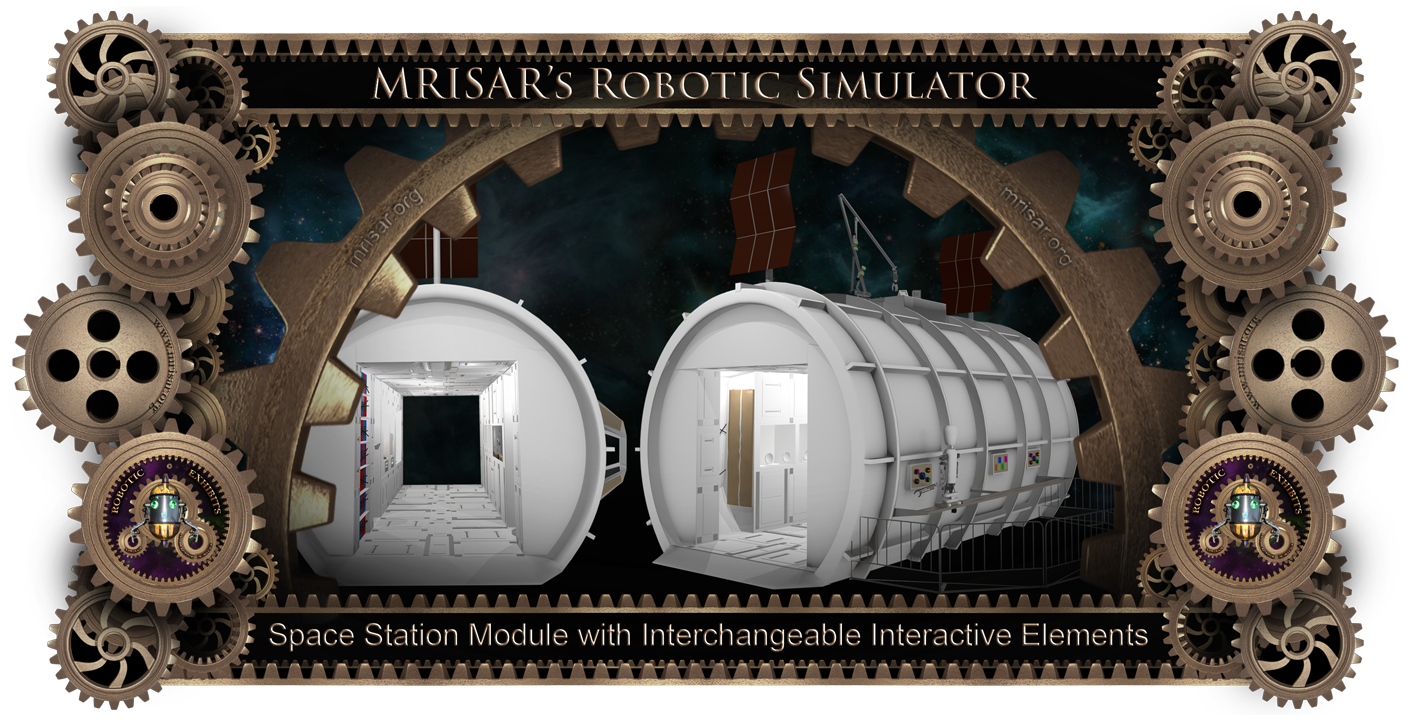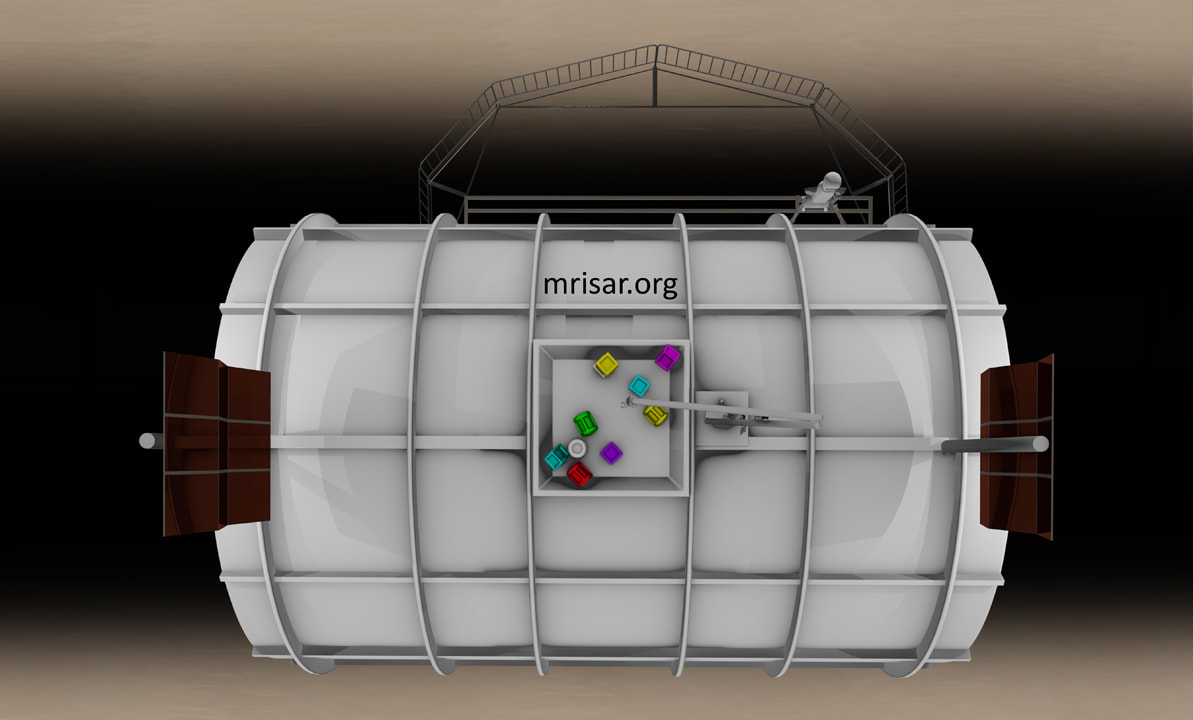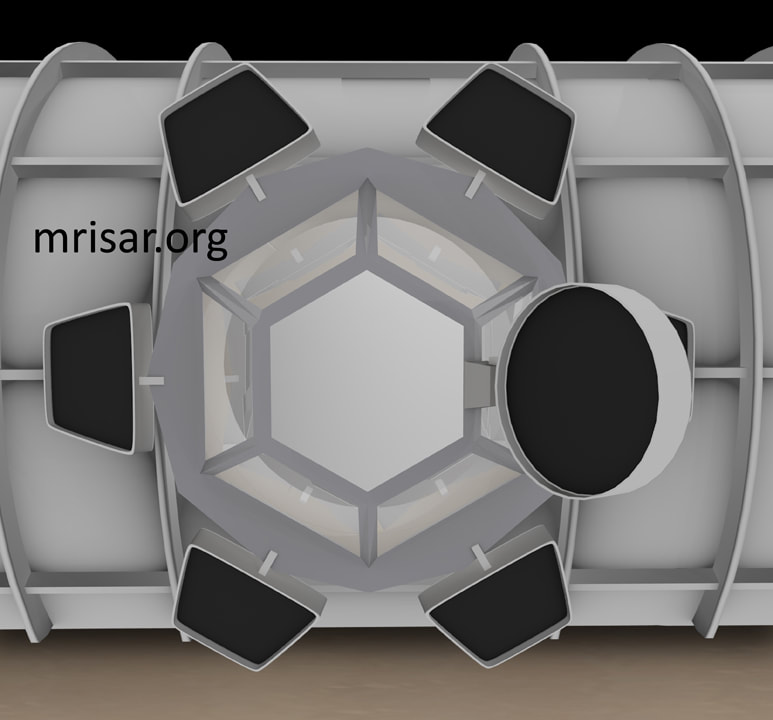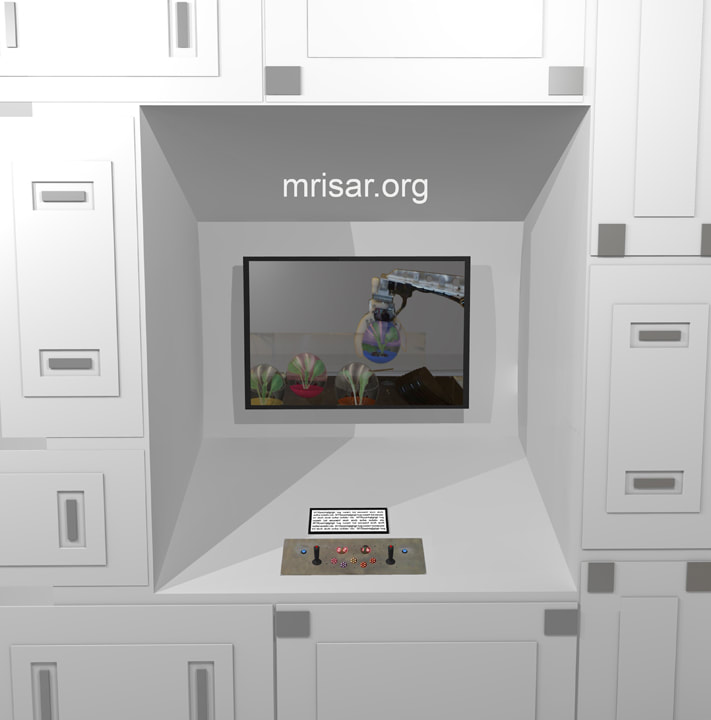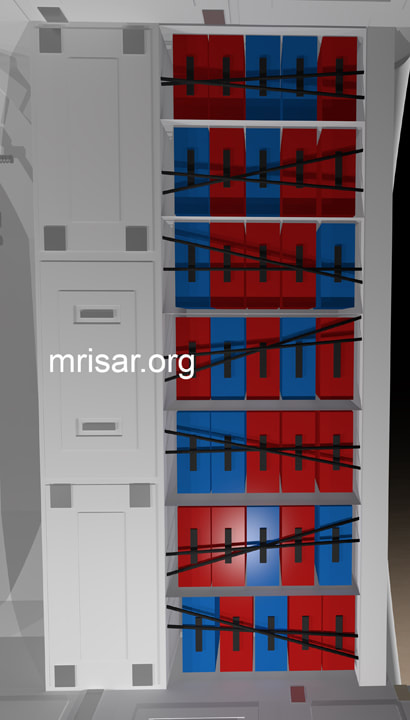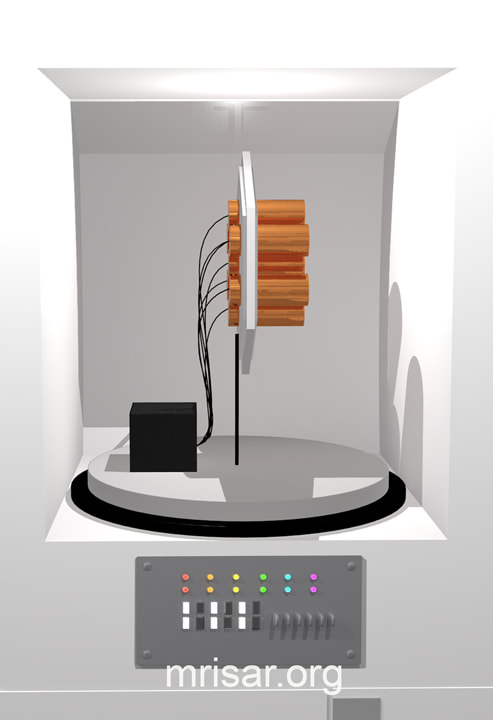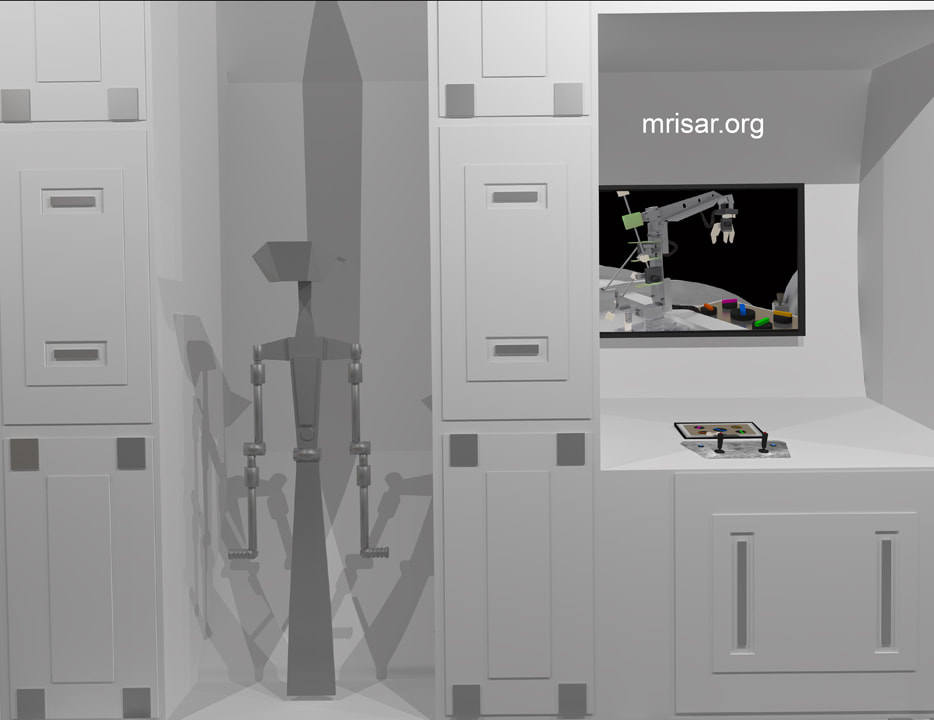MRISAR's Space Station Module Simulator with Interactive Elements
|
The Space Station Module Simulator design with multiple Robotic and Dexterous Manipulator workstations is configured so that the entire hall is a modular system. This allows you to choose from various interactive exhibit modular insert items from a list we provide with the budget and educational relevance outlined for each one. It also allows you to select your preference for budget limits as needed, based on the purchase of the main module form and your choice of the interactive items to start with; while still having the option to add more elements later if needed, and/or additional module sections or other elements. Elements include interactive robotics, dexterous manipulators, kiosks and based on the real Space Station; sleeping quarters and bathrooms.
Areas that are left without interactive elements or models are capped with provided decorative wall forms that also have detailing as shown in the images and can feature additional frame or cutout areas for text, graphics and as needed, video elements for a modest additional fee. For each accepted interactive element you will also receive enough graphical and text elements to fill an adjoining hall wall panel as graphical support is included in the cost of interactive element purchases, making it likely to be all that is needed for those aspects. The design of the module is also key to the ability to upgrade and easily maintain the exhibit. Additional interactive modular elements can easily be added. For repairs the modular systems slide out for easy access and in most cases are repairable in 20 minutes or less. The slide out sections are equipped with rollers, so are very easy to service and upgrade, or even change theme elements for further developments if wished. The exhibit challenges a visitor’s skill and dexterity, while representing remote handling. The exhibit also provides hands on activities based on Telepresence Robotic Manipulation technology which encompasses devices for transmitting movements to a remote robotic device, allowing the manipulation of objects that are too heavy, dangerous, or in other respects too difficult to handle directly. Visitor’s Mission; Prepare for your enlistment as the primary robotics operation commander on the Space Station. During your tour you must operate different types of dexterous training manipulator robot arms and a repair robot. You must also learn about the other systems on the space station by acquiring additional information at the learning kiosks. Keep track of your accomplishment level with each task. Each training activity is timed so use your time well. Mission command and your fellow astronauts are depending on your focus and skills. Dexterous Manipulator Training Areas involve aspects of maintenance, repair and adaptation of space station systems. For instance you must reset the routes from the power distribution center on the exterior of the space station to better distribute power to the areas that are required for system upgrades by using a telepresence Humanoid Robot. The giant robotic working space arm that is incorporated into this exhibit is a version of the same ones we invented and fabricate for NASA; for ISS Space Station Exhibitions in Space Camps at the US Space & Rocket Center and Space Center Houston at Johnson Space Center. They are simulator Space Robotics for NASA. The robotic arms that we invent and fabricate for public use are so gentle they can touch a raw egg without breaking it. This exhibit relates to STEM education. This exhibit is highly educational and visually stunning. It is designed to illustrate remote handling applications for robotics which are used by industry, aerospace and commercial establishments to extend human capabilities in hazardous situations. The exhibit is view-able from all sides making it an ideal mid-floor device. The robotics have pressure sensitive and end of travel limits and support logic that can adapt instantly to any arrangement of objects in their path. The robotics are usable by any age range of visitor. For the purchase of the module 50% would be required to start and then 25% when the module form part of the project is 70% completed. The remaining would be due upon delivery and installation. Photo and video progress updates will be provided with each step. Each interactive modular element purchase requires 50% down and 50% upon completion. Our devices are also engineered to last and are Derated with regards to all aspects of design and engineering so they will endure years of exceedingly hard use. Typically our exhibits are still in operation 18 years after being installed and under regular use. Installation can be provided; however if needed, we request basic transportation costs, lodging, fee for labor and very basic on location costs for an estimated four day setup period (US contiguous States only, foreign locations must be negotiated for this aspect of service). The only contingency for onsite installation is that at the time of the purchase of the main module, enough interactive elements are also purchased to fill at least 65% of the hall part of the structure. This helps us to make the project costs balance well with production. For a single module section the footprint is normally 34 feet long by 24 feet wide; height is 26 feet with solar panels; hall openings are 10 x 12 feet. Many other options, sizes and configurations are possible for smaller units or larger units that even exceed the size of current real space stations. Please contact us for assistance with the details outlining many of the interactive elements, options, sizes and budgetary aspects, shipping and installation elements. |

Terms: 7-year warranty against defects in our workmanship; Free Life-time phone/internet technical support; Life-time parts supply sourcing for our exhibits at reasonable prices. Contact us for price information. Our Workmanship Quality! Our Terms and Warranty! Our Mission Statement! |

